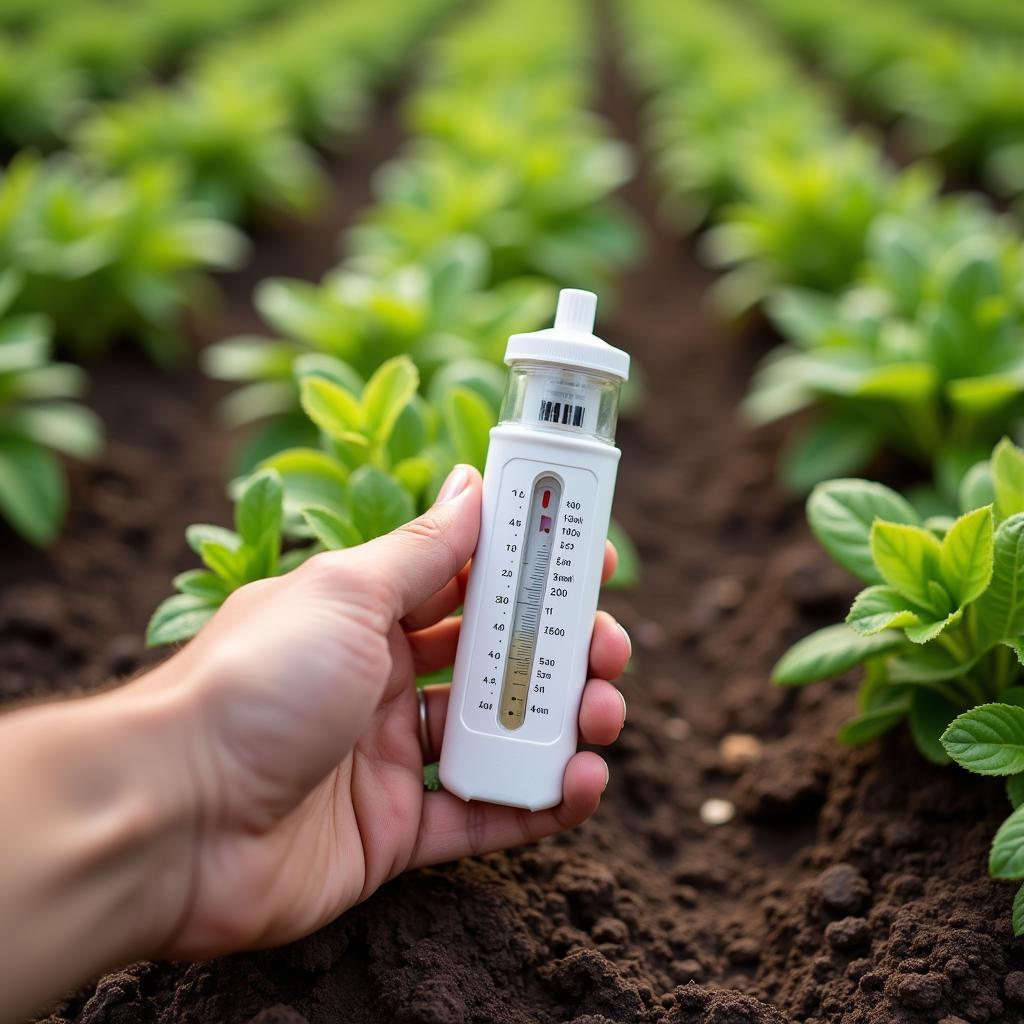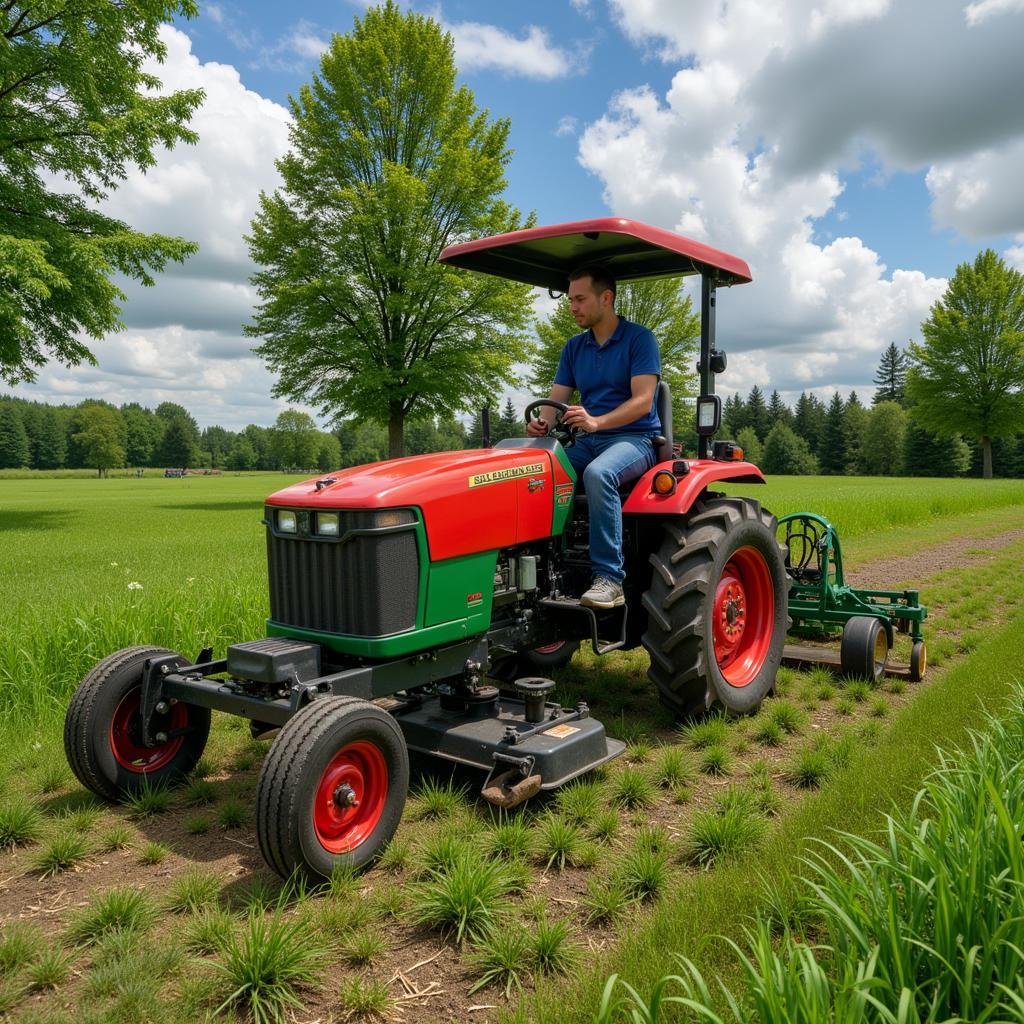Successfully attracting deer and turkey to your property involves providing them with what they need most: high-quality food sources. That’s where Deer And Turkey Food Plots come into play. These strategically planted areas offer a year-round smorgasbord that keeps these animals coming back for more. Whether you’re a seasoned hunter or a wildlife enthusiast, understanding the nuances of food plots is key to enhancing your property’s allure for deer and turkey.
Choosing the Right Location for Your Food Plot
The success of your food plot hinges on its location. Opt for areas that are easily accessible to deer and turkey but also hidden from prying eyes. Consider these factors:
- Sunlight: Aim for at least 6 hours of direct sunlight daily to promote healthy plant growth.
- Water Source: Proximity to a water source, like a stream or pond, is a major draw for wildlife.
- Edge Habitat: Position your plot near the edge of woods or fields to provide both cover and foraging opportunities.
Soil Testing: The Foundation of a Thriving Food Plot
Just like any garden, healthy soil is crucial for a productive food plot. Conduct a soil test to determine the pH level and nutrient content of your chosen area. This information will guide you in selecting the appropriate fertilizer and soil amendments to create an ideal growing environment for your chosen plants.
 Using a soil test kit to assess the soil conditions in a food plot.
Using a soil test kit to assess the soil conditions in a food plot.
Selecting the Best Plants for Deer and Turkey
Deer and turkey have different dietary preferences, so it’s essential to choose plants that cater to both. Here are some top picks:
- Clover: A highly palatable and nutritious option for both deer and turkey, especially during spring and summer.
- Chicory: A perennial favorite for deer, known for its deep roots that provide drought tolerance.
- Brassicas: These cold-hardy plants, like turnips and radishes, offer valuable nutrition during the fall and winter months.
You can also find pre-mixed seed blends specifically designed for deer and turkey, such as the Antler King food plot seed. These mixes often contain a variety of plants to provide year-round attraction.
Planting and Maintaining Your Food Plot
Timing is crucial when planting your food plot. Follow the recommended planting dates for your chosen seed varieties and consider these factors:
- Soil Temperature: Ensure the soil temperature is suitable for germination of your chosen seeds.
- Rainfall: Adequate moisture is essential for seed germination, so plan your planting around expected rainfall.
Once your plot is planted, regular maintenance is key to its success. This includes:
- Weed Control: Regularly inspect your plot and remove any competing weeds to give your chosen plants a competitive edge.
- Fertilization: Based on your soil test results, apply the appropriate fertilizer to replenish nutrients and promote healthy plant growth.
- Mowing: Periodic mowing can encourage bushier growth and prevent certain plant species from becoming overly dominant.
The Benefits of a No-Till Food Plot
For those looking for a less labor-intensive approach, consider a no-till food plot. This method eliminates the need for tilling the soil, minimizing disturbance to the existing ecosystem. No-till food plots can be especially beneficial for small acreage landowners or those with limited time for maintenance.
Food Plot Size and Shape: Finding the Right Fit for Your Property
The ideal size and shape of your food plot will depend on the size of your property and the amount of land you’re willing to dedicate. For small acreage summer food plots, even a small plot can make a significant difference in attracting deer and turkey. Long, narrow plots are generally preferred as they offer more edge habitat, increasing the chances of wildlife encountering the plot while feeling secure.
 Preparing a food plot with a tiller.(https://minacones.com/food-plot-tiller/), breaking up the soil in preparation for planting. The image showcases the equipment needed for traditional food plot establishment.]
Preparing a food plot with a tiller.(https://minacones.com/food-plot-tiller/), breaking up the soil in preparation for planting. The image showcases the equipment needed for traditional food plot establishment.]
Extending the Feast: Fall Food Plot Mixes
As temperatures cool and natural food sources become scarce, a well-timed fall food plot mix can provide crucial sustenance for deer and turkey throughout the fall and winter. These mixes typically include cold-hardy plants like brassicas, winter peas, and cereal grains.
Creating a Wildlife Haven: The Rewards of a Well-Planned Food Plot
Investing time and effort into establishing and maintaining deer and turkey food plots can yield significant rewards for both wildlife and wildlife enthusiasts alike. By providing a reliable source of nutrition, you contribute to the overall health and well-being of the deer and turkey population in your area. Moreover, a well-designed food plot can enhance your enjoyment of your property, providing ample opportunities for wildlife viewing and photography.
FAQs about Deer and Turkey Food Plots
Q: How large should my food plot be?
A: The ideal size depends on your property, but even a 1/4-acre plot can be beneficial.
Q: When is the best time to plant a food plot?
A: Fall and spring are generally the optimal times for planting most food plot species.
Q: What if my soil is poor quality?
A: Soil testing will help you identify deficiencies. Amendments like lime and fertilizer can improve soil health.
Q: How often should I fertilize my food plot?
A: Fertilization needs vary, but generally, fertilizing in the spring and fall is recommended.
Q: What are some common mistakes to avoid when creating a food plot?
A: Some common mistakes include poor site selection, inadequate soil preparation, and neglecting weed control.
Need help creating the perfect deer and turkey food plot? Contact us today at Phone Number: 02437655121, Email: [email protected], or visit us at 3PGH+8R9, ĐT70A, thôn Trung, Bắc Từ Liêm, Hà Nội, Việt Nam. Our team is available 24/7 to assist you!